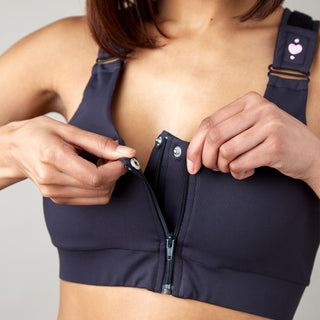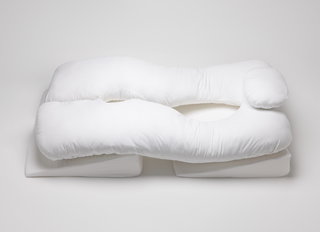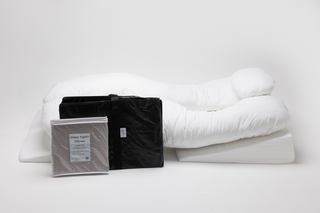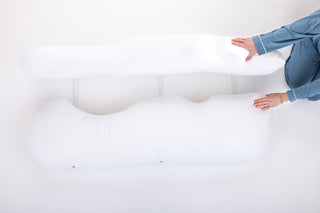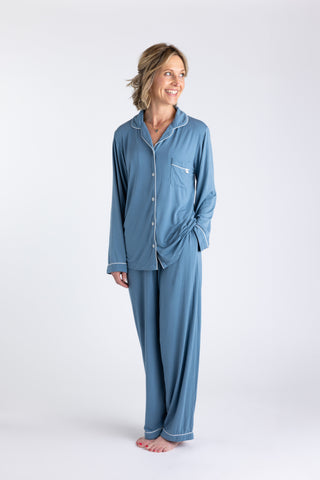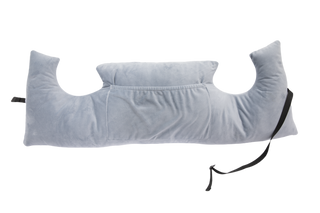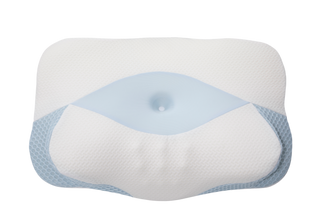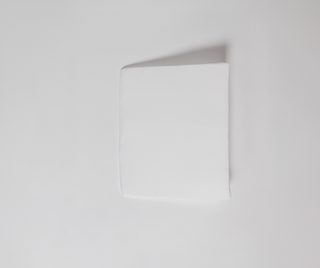The Journey to Healing Begins with the Right Support
In the complex journey of breast cancer treatment and recovery, small comforts make monumental differences. While medical professionals focus on surgical techniques and treatment protocols, there's a crucial element of recovery that deserves more attention: the reconstructive surgery recovery bra.
Often overlooked in discussions about breast surgery, these specialized garments play a pivotal role in both physical healing and emotional recovery. For the thousands of women navigating post-mastectomy life each year, finding the right support becomes an unexpected but essential step toward reclaiming comfort and confidence.
This isn't just about having something to wear after surgery. It's about how thoughtfully designed recovery bras can transform the healing experience, providing not just physical support but a sense of normalcy during a profoundly challenging time.
For the thousands of women who undergo breast reconstruction surgery each year following mastectomies, lumpectomies, or other breast surgeries, recovery doesn't end when they leave the hospital. In many ways, it's just beginning. And that's where the unsung hero of post-surgical care comes in: the reconstructive surgery recovery bra.

Not Your Mother's Surgical Bra
Let's be honest: historically, post-surgical bras were about as glamorous as those paper hospital gowns that never quite close in the back. Functional? Maybe. Comfortable? Questionable. Aesthetically pleasing? Not even close.
The traditional surgical bra looked like something designed by someone who had never actually worn a bra—utilitarian, clinical, and with all the appeal of medical gauze. They were the beige wall paint of the lingerie world: necessary but uninspiring.
Many women report feeling disappointed when presented with traditional post-surgical options. After everything their bodies have been through, the clinical appearance and uncomfortable design of standard recovery bras can feel like adding insult to injury.
But times have changed. Just as reconstructive surgical techniques have advanced dramatically, so too has the world of recovery bras. Today's options offer not just medical functionality but comfort and even—dare we say it—style. Companies like heart&core have reimagined what recovery support can look like, creating bras that acknowledge an essential truth: healing involves both body and spirit.
The Science Behind the Support
Before diving into what makes the perfect recovery bra (spoiler alert: it's not just about looking good), let's talk about why these specialized garments matter from a medical perspective.
Why Can't Women Just Wear Their Regular Bras?
After breast reconstruction surgery, the chest needs specialized care. Standard bras aren't designed to:
-
Provide gentle compression to reduce swelling and promote healing
-
Accommodate surgical drains and dressings
-
Avoid pressure on incision sites
-
Prevent implant displacement during the crucial settling period
-
Accommodate changing breast size and shape during the healing process
The Healing Timeline and Changing Needs
Recovery isn't one-size-fits-all, and neither should your post-surgical support be. Here's a typical timeline and how your bra needs to evolve:
Immediate Post-Op (1-2 weeks)
During this phase, you'll likely need front-closing bras with:
-
Maximum support without underwire
-
Soft, breathable fabric to reduce irritation
-
Adjustable features to accommodate swelling changes
-
Drain pouches or accessibility for drain management
Early Recovery (2-6 weeks)
As drains are removed and initial healing occurs:
-
Continued compression, but with more comfort features
-
Wider straps to distribute pressure
-
Seamless cups to prevent irritation of sensitive tissue
-
Softer fabrics as skin sensitivity increases
Extended Recovery (6 weeks to 6 months)
As your body continues to heal and adjust:
-
Transition bras that offer support while accommodating changing breast shape
-
More shape and definition, but still without underwires
-
Increased focus on confidence-boosting design elements
The New Normal (6+ months)
Once your surgeon gives the all-clear:
-
Specialized bras that continue to support your reconstructed breasts
-
Possibly underwire options if approved by your doctor
-
Focus on both function and feeling good
Beyond the Basics: What Makes an Exceptional Recovery Bra
Now that we understand the medical importance, let's talk about what separates an adequate recovery bra from an exceptional one. While function must come first, there's no reason why healing can't also feel good.
Material Matters
The fabric touching sensitive post-surgical skin isn't just a comfort issue—it's a health one.
Many reconstruction patients report that their skin becomes hypersensitive after surgery. Standard hospital-provided bras can cause irritation or even rashes due to rough materials. Switching to softer premium fabrics can make an immediate difference in comfort and healing.
Look for:
-
Premium fabric blends (95% nylon/5% spandex)
-
Moisture-wicking capabilities to keep surgical sites dry
-
Antimicrobial materials for sensitive skin
-
Breathability to promote healing and comfort
Heart & Core's approach to fabric selection stands out here. Their recovery bras use premium fabric that's not only silky smooth but also designed to reduce bacterial growth—a crucial feature when your immune system is already taxed from surgery and possibly cancer treatments.
Design Details That Make a Difference
Small design elements can have an outsized impact on recovery comfort:
Front Closures: After chest surgery, reaching behind your back feels like attempting advanced yoga. Front-closing bras become not just convenient but essential.
Adjustability: Breast size and shape change throughout recovery, particularly with expanders. Soft but strong medical-grade Velcro® straps for adjustability and security without a scratchy feel.
Strap Design: Wide, cushioned straps distribute pressure and prevent digging into shoulders—especially important when lymph nodes have been removed and lymphedema is a concern.
Drain Management: Early recovery often involves surgical drains. Our patented Larissa Bra design features built-in drain tabs, with a wide, flat band for comfort, to manage drains comfortably and discreetly.
Seam Placement: Seamless tag means no itching.
The Psychological Component
Here's where we venture beyond the purely medical. Recovery isn't just physical—it's deeply emotional. After breast surgery, many women report feeling disconnected from their bodies. The right recovery bra can actually help bridge this gap.
When women finally find post-mastectomy bras that don't scream 'medical device,' something shifts. It isn't about vanity. It's about feeling like a woman, not just a patient.
This psychological component is where companies like heart&core have truly revolutionized the recovery experience. By creating bras that offer medical functionality without sacrificing feminine identity, they acknowledge the whole person healing—not just the surgical site.

Finding the Perfect Match: How to Choose
With more options than ever, how does a woman find the reconstructive surgery recovery bra that's right for her specific journey? Here's a practical guide:
Before Surgery: Preparation Pays Off
If possible, women should purchase their initial recovery bras before the surgery date. This allows them to:
-
Try them on while they can still reach comfortably
-
Ensure proper initial fit
-
Have them washed and ready
-
Reduce stress during immediate recovery
Key Features Checklist
When evaluating options, consider:
Compression Level:
-
Immediate post-op: Firm compression
-
Later recovery: Moderate to light compression
Closure Type:
-
Front-closing with medical-grade Velcro
-
Easy to manage with limited mobility
-
Secure enough to stay closed during sleep
Cup Design:
-
Wireless support
-
Accommodates different breast sizes if reconstruction is unilateral
-
Space for prosthetics if needed
-
Pockets for padding or breast forms if desired
Practical Considerations:
-
How many are needed? (Recommendation: at least 3-4 for rotation)
-
Washing requirements (hand washing recommended)
-
Quality vs cost (this is an investment in recovery)
Sizing Considerations:
Standard bra sizing often doesn't translate directly to reconstruction recovery bras. Many companies use different systems (XS-XL or numerical systems based on band size).
heart&core offers a helpful medical bra sizing guide that makes it easy to find your size, including specific measurements.

Reconstructive Surgery Types and Their Unique Support Needs
Different breast reconstruction approaches require specific considerations when it comes to recovery support:
DIEP Flap Reconstruction: This advanced technique uses tissue from the lower abdomen to recreate breast tissue. After DIEP flap surgery, women need support bras that avoid touching their abdominal incision while still supporting reconstructed breasts. Recovery bras with a band high enough to sit above stomach incisions are crucial for comfort during the toughest months of healing.
Implant Reconstruction with Expanders: This two-stage process involves placing tissue expanders that gradually stretch the skin and muscle to make room for permanent implants. During the expansion phase, breast size changes regularly. Adjustable front-close recovery bras stretch to accommodate these changes, making a huge difference in both physical comfort and emotional well-being during this evolving process.
Latissimus Dorsi Flap Reconstruction: This technique uses muscle, fat, and skin from the upper back to recreate breast tissue. Women who undergo this procedure need bras that won't irritate both chest and back incisions simultaneously. Recovery bras with soft, seamless backs and adjustable features help manage discomfort from multiple surgical sites.
Single Mastectomy without Reconstruction: Even without reconstruction, specialized support is needed for healing and for balancing with a prosthesis afterward. The asymmetrical weight can cause back pain and posture issues. Properly designed post-surgical bras with pockets for breast forms can completely change daily comfort levels and help maintain body alignment.
Nipple-Sparing Mastectomy with Reconstruction: This approach preserves the nipple and areola during mastectomy. Recovery bras for this procedure need to avoid pressure and friction on the sensitive nipple area while still providing compression and support to the rest of the breast. Cups with soft interior linings and strategic seam placement are particularly important.
Beyond Recovery: When Specialized Support Becomes Everyday Comfort
For many women, the journey doesn't end with medical recovery. Reconstructed breasts have different support needs for the long term. Features that started as medical necessities often become preferred comfort choices.
Many women expect to go back to 'regular' bras after recovery. However, they often find that the soft compression and wire-free support of recovery-style bras actually feel better with reconstructed tissue. The transition is often to more everyday styles with the same supportive features.
heart&core recognizes this transition by offering a range of post-surgical bras that extend beyond immediate recovery into everyday life with reconstructed breasts. Their collection maintains key supportive elements while introducing more traditional styling—bridging the gap between medical necessity and everyday comfort.
The Sustainable Approach to Recovery
An often overlooked aspect of recovery planning is sustainability—both environmental and financial.
Quality recovery bras represent an investment, but cheaper options often need replacement midway through recovery, ultimately costing more while providing less comfort. Companies like heart&core focus on durability, creating garments that transition through multiple recovery phases. From an environmental perspective, this "fewer, better" approach greatly reduces waste.
Navigating Insurance and Costs
For many women, cost becomes a significant factor in recovery planning. The good news is that post-surgical bras are FSA/HSA eligible.
Insurance Coding Know-How
Most insurance companies cover post-mastectomy and post-reconstruction garments under the Women's Health and Cancer Rights Act, but proper coding is essential.
A prescription from your surgeon specifically noting medical necessity greatly improves approval chances of coverage. Contact your insurance provider directly for more information.
FSA/HSA Eligibility
If insurance coverage is limited, most post-surgical bras qualify for Flexible Spending Account or Health Savings Account reimbursement. Save your receipts and obtain a Letter of Medical Necessity from your physician.
Assistance Programs
For those facing financial constraints, several programs provide assistance:
-
CancerCare provides limited financial assistance for post-surgical supplies
-
The Pink Fund offers financial support during breast cancer treatment
-
Local cancer support organizations often maintain post-mastectomy supply closets
For Partners and Caregivers: How to Help
Those supporting someone through breast reconstruction recovery should understand the importance of proper surgical support garments to provide better care.
Practical Support Tips
-
Help with bra changes in the early days when movement is restricted
-
Learn how to empty and manage surgical drains if present
-
Assist with laundering recovery bras (hand washing, lay flat to dry)
-
Offer to research options if shopping feels overwhelming
-
Understand that complaints about discomfort should be taken seriously, as the right bra can make a significant difference
-
Support your loved one with a gift card for a post-surgical bra.
It's important to remember that discussions about post-surgical bras might feel clinical to caregivers, but they represent a deeply personal aspect of recovery for the patient. These conversations should be approached with sensitivity, understanding that bras are connected not just to physical comfort but to body image and identity during a vulnerable time.
Finding a Way Forward
The journey through breast reconstruction is deeply personal. No two recoveries look exactly alike, and each woman's needs may differ from those of others. What remains universal is the importance of proper support—both physical and emotional—during this transformative time.
The right reconstructive surgery recovery bra does more than hold tissue in place. It provides confidence during vulnerability, comfort during discomfort, and a small sense of normalcy when everything feels different.
Women often report feeling emotional about finding the right post-surgical bra. When someone puts on a garment that was clearly designed by people who understood what their body had been through, they feel seen. And that feeling can be as healing as any medicine.
As medical advances continue to improve reconstruction outcomes, companies like heart&core ensure that recovery support advances alongside—recognizing that healing happens not just in the operating room but in the everyday moments of life after surgery.
Whether someone is preparing for upcoming surgery, currently in recovery, or supporting a loved one through reconstruction, the right support makes all the difference—and that difference extends far beyond the physical.
Because ultimately, the best reconstructive surgery recovery bra doesn't just support healing tissue—it supports the whole woman as she rediscovers her strength, her comfort, and herself.
This blog post is meant to provide general information about reconstructive surgery recovery bras and is not intended as medical advice. Always consult with your healthcare providers about your specific post-surgical needs.
heart&core is committed to supporting women through all phases of breast surgery recovery with thoughtfully designed medical bras that prioritize both medical functionality and emotional wellbeing. Learn more about their specially designed post-surgical collection at heartandcore.com.



